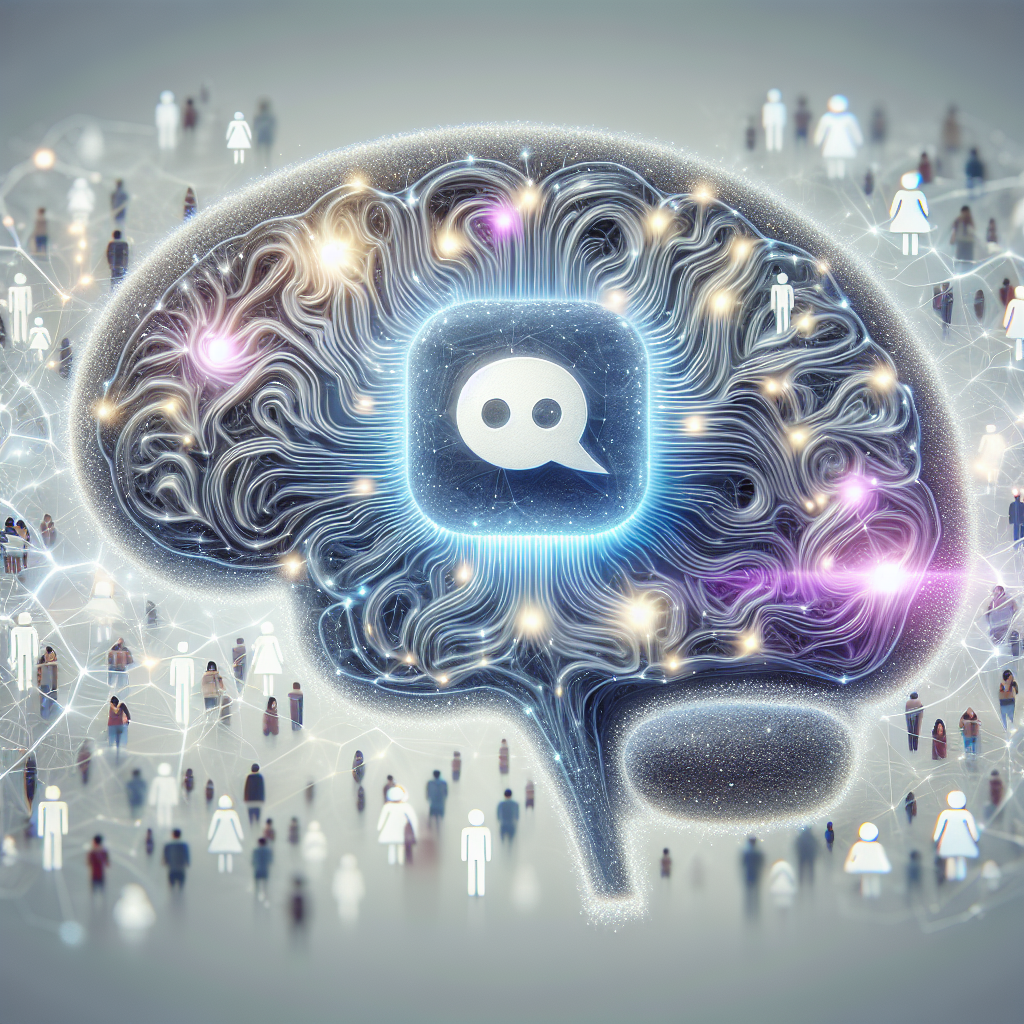The Psychology Behind Conversational AI: Creating Human-like Interactions
Conversational AI, also known as chatbots or virtual assistants, have become an increasingly popular tool for businesses looking to enhance their customer service and streamline their operations. These AI-powered systems are designed to mimic human conversation and provide users with a more personalized and efficient experience.
But what is it about conversational AI that makes it so effective in creating human-like interactions? In this article, we will explore the psychology behind conversational AI and how it is able to replicate the nuances of human conversation.
Understanding Human Communication
Human communication is a complex and multifaceted process that involves various elements such as language, tone, body language, and context. When we interact with others, we are constantly interpreting these cues to understand their emotions, intentions, and meaning.
Conversational AI systems are designed to replicate this process by analyzing text input, identifying patterns, and generating appropriate responses. Through natural language processing (NLP) and machine learning algorithms, these systems are able to understand the context of a conversation and provide relevant and engaging responses.
The Power of Personalization
One of the key aspects of human communication is personalization. When we interact with others, we tailor our responses based on their preferences, emotions, and past interactions. This personalized approach helps to build rapport and strengthen relationships.
Conversational AI systems are able to mimic this personalization through the use of data analytics and user profiling. By collecting and analyzing data on user behavior, preferences, and demographics, these systems can tailor responses to individual users and provide a more personalized experience.
For example, a virtual assistant may remember a user’s name, past purchases, and preferences, and use this information to provide relevant product recommendations or assistance. This level of personalization helps to create a more engaging and human-like interaction.
Emotional Intelligence
Another important aspect of human communication is emotional intelligence. We are constantly interpreting and responding to the emotions of others, whether through verbal cues, tone of voice, or body language. This emotional intelligence helps us to empathize with others, build trust, and establish meaningful connections.
Conversational AI systems are now incorporating emotional intelligence capabilities to enhance the user experience. By analyzing text input for emotional cues and sentiment, these systems can provide empathetic responses and adapt their tone and language to better match the user’s emotions.
For example, if a user expresses frustration or dissatisfaction, a virtual assistant may respond with a more empathetic and understanding tone, offering solutions or assistance. This emotional intelligence helps to create a more human-like interaction and build a stronger connection with the user.
Creating a Seamless Experience
In order to replicate human conversation effectively, conversational AI systems must be able to create a seamless and natural experience for users. This involves not only understanding language and emotions but also maintaining context, coherence, and flow throughout the conversation.
To achieve this, conversational AI systems use a combination of techniques such as dialogue management, sentiment analysis, and natural language generation. These techniques work together to ensure that the conversation remains engaging, relevant, and coherent, even as it progresses through multiple turns and topics.
By creating a seamless experience, conversational AI systems are able to keep users engaged and satisfied, leading to higher levels of customer satisfaction and loyalty.
Frequently Asked Questions (FAQs)
Q: How can conversational AI systems understand the context of a conversation?
A: Conversational AI systems use natural language processing (NLP) and machine learning algorithms to analyze text input, identify patterns, and extract meaning from the conversation. By analyzing the context of the conversation, these systems can generate relevant and engaging responses.
Q: How do conversational AI systems personalize interactions with users?
A: Conversational AI systems personalize interactions by collecting and analyzing data on user behavior, preferences, and demographics. By using this data to tailor responses to individual users, these systems can provide a more personalized and engaging experience.
Q: How do conversational AI systems incorporate emotional intelligence?
A: Conversational AI systems incorporate emotional intelligence by analyzing text input for emotional cues and sentiment. By responding empathetically and adapting their tone and language to match the user’s emotions, these systems create a more human-like interaction.
Q: What techniques are used to create a seamless experience in conversational AI systems?
A: Conversational AI systems use techniques such as dialogue management, sentiment analysis, and natural language generation to create a seamless experience. These techniques help to maintain context, coherence, and flow throughout the conversation, keeping users engaged and satisfied.
In conclusion, the psychology behind conversational AI is a fascinating field that continues to evolve and improve. By understanding the complexities of human communication and incorporating techniques such as personalization, emotional intelligence, and seamless experience, conversational AI systems are able to create human-like interactions that enhance the user experience and drive business success.

